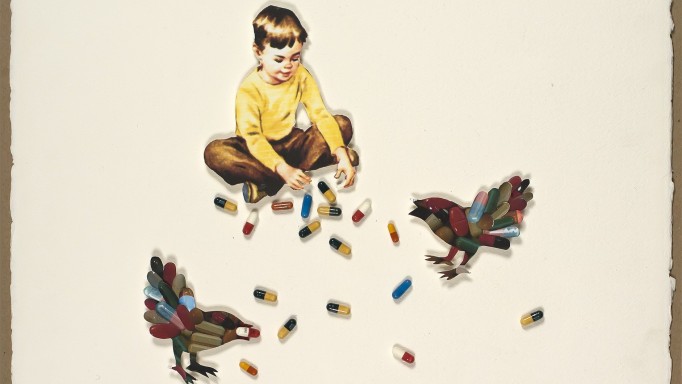Despite tremendous advances in HIV treatment and prevention, HIV-related stigma persists, which is why the language and terms we use to describe HIV and AIDS as well as people living with HIV matter. Certain words can help foster positive attitudes about people living with HIV while other words and phrases we choose can fuel stereotypes, stigma and discrimination.
Using people-first language can help reduce HIV-related stigma because it focuses on people rather than their health status and presents a more respectful portrayal of individuals.
The concept of people-first language was first introduced in 1983 when a group of HIV activists created “The Denver Principles,” a self-empowerment manifesto that began as follows:
“We condemn attempts to label us as ‘victims,’ which implies defeat, and we are only occasionally ‘patients,’ which implies passivity, helplessness, and dependence upon the care of others. We are ‘people with AIDS.’”
People-first language is also free of the kinds of value judgments about a person’s behavior that may put them at greater risk of contracting HIV. In addition, using gender- inclusive language can help lessen stigma surrounding HIV while also helping to promote gender equality and eliminate gender bias. We can better support those living with—and at risk of contracting—HIV by choosing our words carefully and accurately.
| Stigmatizing Language: HIV/AIDS | |
|---|---|
| Preferred Language | Be specific. Are you referring to HIV, AIDS or both? |
| Stigmatizing Language: HIV-infected person, HIVers, HIV or AIDS carrier, victim, sufferer | |
|---|---|
| Preferred Language | Person living with HIV or AIDS. Emphasize the person not their diagnosis. |
| Stigmatizing Language: HIV or AIDS patient | |
|---|---|
| Preferred Language | Client or member of the HIV community |
| Stigmatizing Language: Died of AIDS | |
|---|---|
| Preferred Language | Died of an AIDS-related illness, AIDS-related complications or end-stage HIV |
| Stigmatizing Language: Full-blown AIDS | |
|---|---|
| Preferred Language | AIDS or end-stage HIV. AIDS has no stages. |
| Stigmatizing Language: HIV infections | |
|---|---|
| Preferred Language | HIV acquisitions, transmissions, cases or diagnoses |
| Stigmatizing Language: Contaminated or infected with HIV | |
|---|---|
| Preferred Language | Contracted or acquired HIV or diagnosed with HIV |
| Stigmatizing Language: Catch, contract or transmit AIDS or catch HIV | |
|---|---|
| Preferred Language | Contract, transmit or acquire HIV. AIDS is not transmitted, and HIV is not something you catch |
| Stigmatizing Language: Coinfect | |
|---|---|
| Preferred Language | Contract, transmit or acquire multiple viruses |
| Stigmatizing Language: Serodiscordant couple | |
|---|---|
| Preferred Language | Serodifferent or mixed-status couple |
| Stigmatizing Language: HIV-exposed infant | |
|---|---|
| Preferred Language | Infant exposed to HIV |
| Stigmatizing Language: AIDS orphan | |
|---|---|
| Preferred Language | Children orphaned by the loss of parents or guardians who died of AIDS-related complications |
| Stigmatizing Language: Compliant or noncompliant | |
|---|---|
| Preferred Language | Adherent or nonadherent is more positive and proactive. |
| Stigmatizing Language: HIV is a death sentence, fatal or a life-threatening condition. | |
|---|---|
| Preferred Language | HIV is a chronic, manageable health condition that can be serious for people not in care or treatment. |
| Stigmatizing Language: Prevent HIV infection | |
|---|---|
| Preferred Language | Reduce the risk of contracting or acquiring HIV |
| Stigmatizing Language: Unprotected or unsafe sex | |
|---|---|
| Preferred Language | Sex without a condom, sex without the use of PrEP or sex without an undetectable viral load. Be specific. |
| Stigmatizing Language: Prostitute; prostitution | |
|---|---|
| Preferred Language | Sex worker; transactional sex or the sale of sexual services |
| Stigmatizing Language: Promiscuous | |
|---|---|
| Preferred Language | Having more than one sexual partner |
| Stigmatizing Language: Tainted needles; tainted blood | |
|---|---|
| Preferred Language | Shared needles or equipment; blood containing HIV |
| Stigmatizing Language: Clean or dirty | |
|---|---|
| Preferred Language | Avoid these terms. HIV has nothing to do with one’s hygiene. |
| Stigmatizing Language: Drug user/addict | |
|---|---|
| Preferred Language | Person who uses drugs or who has a substance use disorder |
| Stigmatizing Language: A transgender, transgendered | |
|---|---|
| Preferred Language | Person who is transgender, person of trans experience |
| Stigmatizing Language: Biological sex | |
|---|---|
| Preferred Language | Assigned gender at birth |
| Stigmatizing Language: Incorrect or assumed pronouns | |
|---|---|
| Preferred Language | Use correct pronouns. If unsure, ask. |
| Stigmatizing Language: Sex change operation/surgery | |
|---|---|
| Preferred Language | Gender-affirming surgery |
| Stigmatizing Language: Changed gender or sex | |
|---|---|
| Preferred Language | Transitioned |
| Stigmatizing Language: Gendered terms (mailman, manmade) | |
|---|---|
| Preferred Language | Use inclusive terms (mail carrier, made by humans) |
This language chart was adapted from guidelines created for and by people living with HIV from CAN Community Health and Positive Women’s Network—USA. Special thanks to Vickie Lynn, MSW, MPH; Venita Ray, JD; Valerie Wojciechowicz; CAN Community Health; and Positive Women’s Network–USA. Click here to read more about people-first language and reducing stigma in HIV communication.
Here are some additional resources on language and HIV:
A Guide to Talking About HIV (CDC)
UNAIDS Terminology Guidelines (UNAIDS)
NIAID HIV Language Guide (NIAID)
Last Reviewed: January 5, 2023










